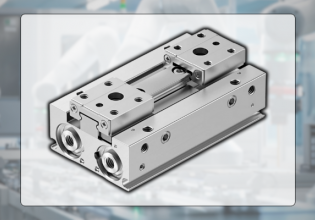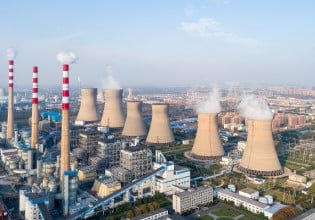Balluff Introduces I/O Module with the Protection of CIP Safety
The newly-announced CIP Safety I/O Module from Balluff supports CIP Safety specifications over an Ethernet network, providing a platform for safety device distribution directly on the machine center.
Safety is a top priority in manufacturing. From the training of personnel to the operation of mission-critical equipment, it is important that everything operates safely while not negatively impacting the efficiency of a process.
Safety equipment in a control system will include devices at all levels. They will almost certainly include the basic I/O devices such as light curtains, emergency stop buttons, and progresses up to the application levels of safety relays, safety controllers, and even safety PLCs for managing larger scale operations.

Balluff CIP Safety I/O Module. Image used courtesy of Balluff
Balluff CIP Safety I/O Module
In modern control systems, machine centers can be quite complex, and they can also be combined to create larger, modular systems. In these cases, the array of safety devices can burden a system, consuming the available wiring terminals on the safety controller, so more controllers must be installed.
With the heightened capacity for secured, reliable networks, it is possible to expand a safety system to include breakout I/O modules installed directly on each machine, condensing the wiring to only a single monitoring port on the controller. Traditional network protocols are not reliable enough to be rated for safety, so this is not a typical function of the standard Ethernet or Profinet channel on a standard PLC.
Balluff recently announced a new addition to the line of safety devices; The BNI00HN CIP Safety I/O Module.
This IP67-rated module is a distribution point for 12 safe sourcing input devices and 4 safe sinking outputs. The communication follows the Common Industrial Protocol (CIP) Safety protocol using an Ethernet/IP standard. This network allows the reliability of the safety communication as well as the standard I/O control of the Ethernet/IP network.
Using this system, a wider array of safety I/O devices may be installed on a machine with a single link point back to the controller through the safety I/O module.
What is CIP Safety?
The CIP Safety provides enhanced security for communication networks, but not by preventing errors. Such action is very difficult. Instead, the protocol allows for actions to be taken as a precaution or response to any detection of errors. These actions include:
-
Each transmission of data includes a timestamp which is used by the controller to determine the currency of a transmission.
-
Each transmission of data includes a unique ID, read by the controller, to ensure that every transmission is received.
-
Error detection is allowed through the reading of a ‘checksum’ which is a block of data included in each transmission to verify accuracy.
-
Redundant error checking is provided to ensure that both the sending and receiving devices maintain transmission integrity.
-
Standard data transmissions using non-safety CIP devices may not transmit data using the CIP safety protocol.
Following these guidelines does not change the structure of a packet of information in a network, it only provides a guideline for the contents of the data packet. This allows a wider array of normal data-carrying platforms, such as Ethernet, fiber optic, and even wireless transmissions to exhibit CIP Safety characteristics.

The safety application layer is designed over an Ethernet/IP layer to ensure the accurate transmission of data. Image used courtesy of ODVA
Balluff Safety Module Specs
The Safety I/O Module from Balluff is designed to support multiple output devices, and therefore can provide up to 2 amps per output channel. LEDs indicate the status of both input and output terminals for rapid diagnosis by a technician.
Balluff is a global leader in the manufacture of input and output devices, and their catalog also includes I/O modules with many configurations including this safety rating, IO-Link compatibility, and a selection of sizes for many applications.
Summary
Safety is an important consideration in all machine design. The safe inputs and outputs are only the first step, and these I/O modules provide consolidation for networks with many safe I/O devices.
It is important to remember, with all safety networks, every included device (even network switches in these Ethernet systems) must maintain a safety rating, as any device that lacks such a rating will de-rate the entire system.






